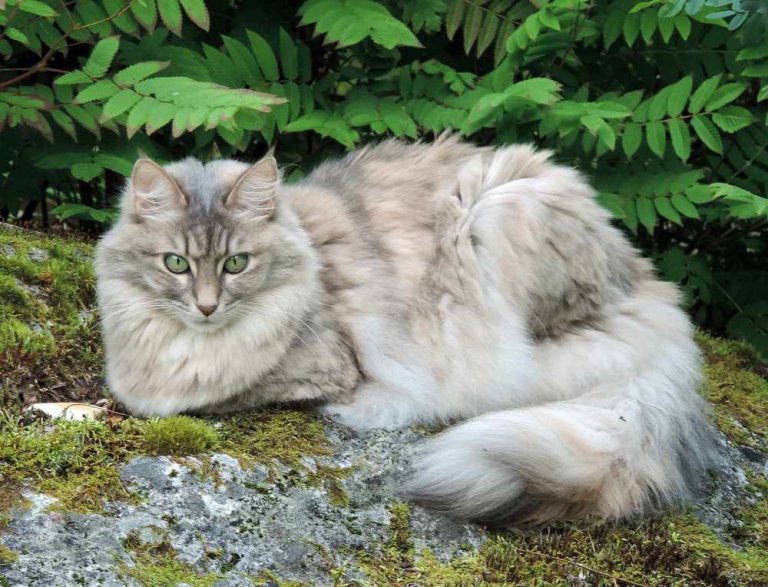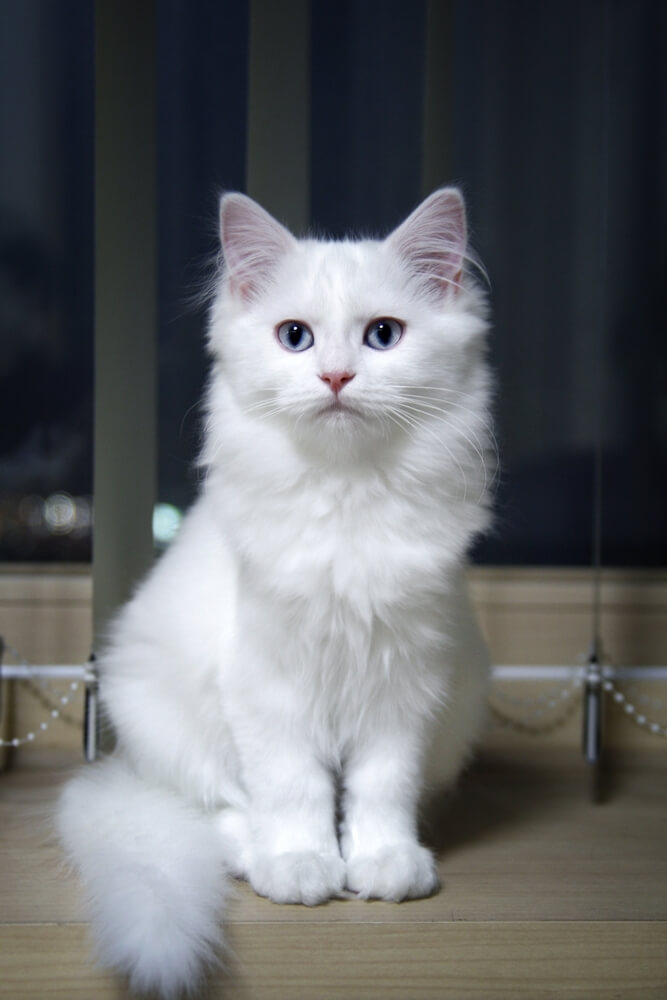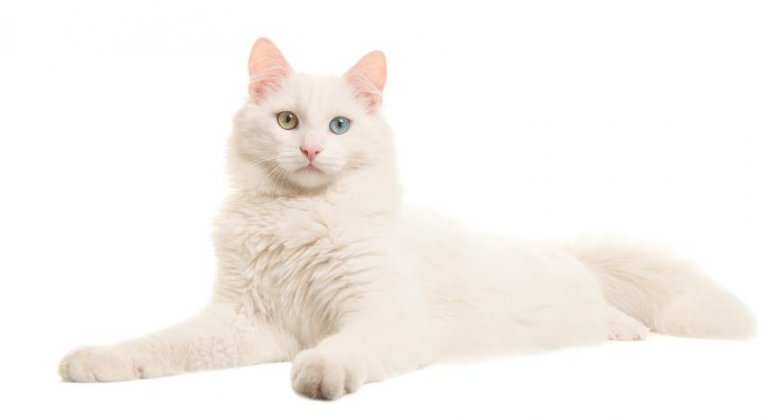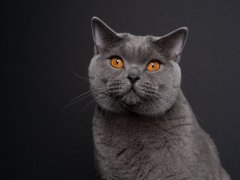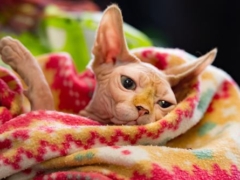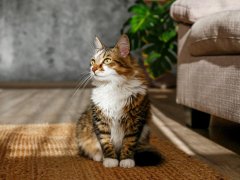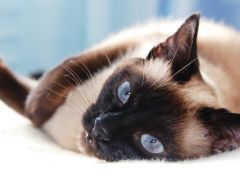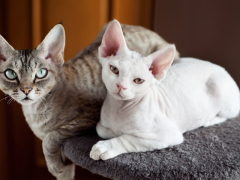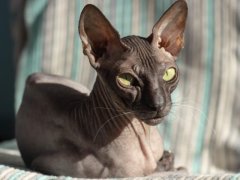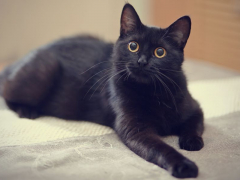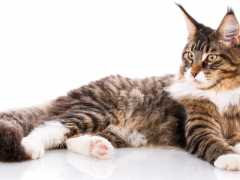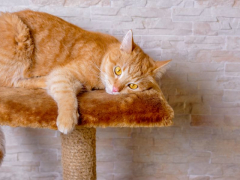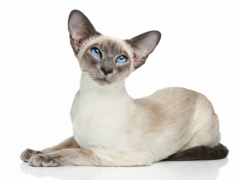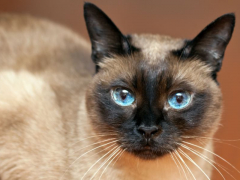Personality and Temperament
Also known as the Ankara cat, the Turkish Angora has a marvelous personality to match its stunning appearance. Highly intelligent, just a little bit talkative, and beloved for their tendency to develop complete devotion for their favorite person, these cats like to be in the middle of everything, often watching the action without actually joining in.
Of course, Turkish Angora cats do have a playful streak, curiously investigating cupboards, drawers, empty boxes, and everything else they can find their way into. They love games of chase, and can even learn to play fetch. The more you praise a Turkish Angora and applaud their antics, the happier they'll be and the stronger your bond will become.
The Turkish Angora is one of a few breeds that enjoy water. These cats have a fondness for faucets, and given the opportunity, will happily accompany their people into the shower or sit on the side of the bathtub, perhaps dipping a paw to create mesmerizing ripples. Some individuals have even been known to swim!
Although the Turkish Angora cat enjoys attention, members of this breed are a bit less demanding than some other breeds like the Siamese and Oriental Shorthair. As long as Turkish Angoras have plenty of toys to keep them entertained throughout the day, they're fine with spending time on their own and will greet you with great enthusiasm when you return from a long day at work.
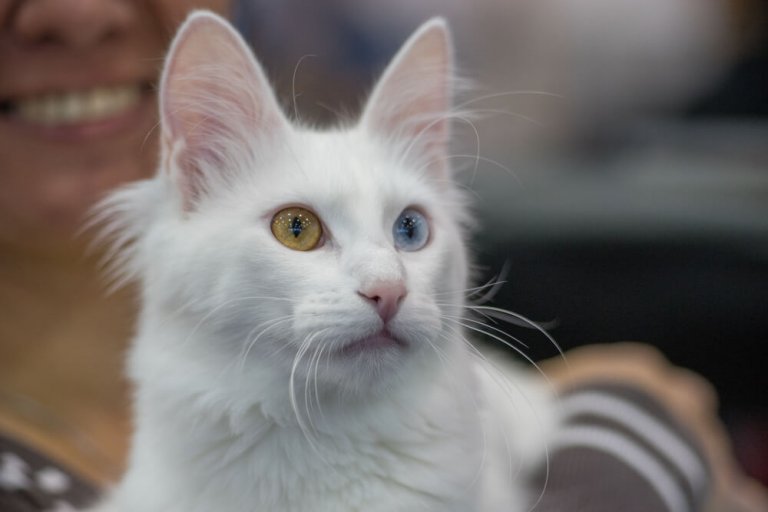
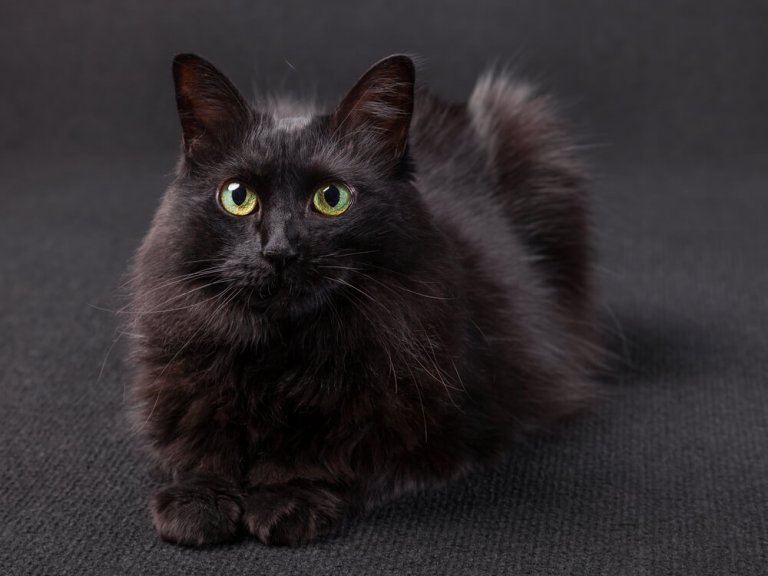
Care
Nutrition
Grooming
Exercise
Health
Turkish Angora cats don't have any special nutritional needs, however it's best to offer a high-quality food that contains real meat or real fish as the number one ingredient. You might want to look for a brand that incorporates additional omega fatty acids to support skin and coat health.
Despite having a medium-long coat, the Turkish Angora does a fairly good job of keeping itself groomed. Since Turkish Angora cats have single coats with no heavy undercoat, they are not prone to developing mats. Of course, you're welcome to offer a daily brushing, which your cat will appreciate. Not only is this a great opportunity to bond with your cat, you'll catch any small tangles.
Turkish Angora cats love to play, particularly when others get involved. These cats love to chase balls and catnip mice, and they're fond of teaser wands, too. You'll want to treat your Turkish Angora to a cat tree that satisfies their instinctual need to climb, and they'll certainly appreciate other cat furniture, such as scratching posts and window seats. A well-stocked basket of toys will keep your Turkish Angora entertained.
As a natural cat breed, the Turkish Angora is generally healthy. A few rare conditions can affect Turkish Angoras, including ataxia, an inherited condition that is autosomal recessive. Affected kittens display tremors and typically do not survive to adulthood.
Some Turkish Angora cats (usually male) develop a heart condition called hypertrophic cardiomyopathy (HCM) at middle age. In addition, some Turkish Angoras, particularly those with white coats and blue eyes or odd-colored eyes, are born deaf, or with deafness in the ear on the same side as the blue eye.
History
The Turkish Angora cat evolved naturally in the mountains of Turkey many hundreds of years ago. The earliest written records of the breed trace back to France in the 1500s. Long-haired cats made their way to Britain and France as early as the late 1500s, coming from Russia, Persia, and Turkey. It's likely that some of these were Turkish Angoras.
In the early 20th century, European cat fanciers and breeders bred Angora cats to other long-haired breeds, including Persians. Before long, so much interbreeding had taken place that purebred Turkish Angora cats nearly became extinct. The cats were impossible to find outside of Turkey, where the breed is considered to be a national treasure.
In the early 1900s, Turkey's government and the Ankara Zoo developed a breeding program aimed at preserving the Angora cat breed. White Angora cats with blue eyes, gold eyes, or odd eyes (one blue eye and one eye in green, green-gold, or amber) were a main focus of the breeding program.
In 1962, a U.S. Army colonel named Walter Grant was stationed in Turkey. He and his wife exported a pair of Turkish Angora cats to the United States. These cats came with pedigrees and interest in the breed grew rapidly. Even though it was difficult to import Angora cats, more breeders joined the effort and these beautiful cats once again proliferated in the West.
The Cat Fanciers' Association (CFA) accepted Turkish Angora cats for registration in 1968, and in 1970, allowed provisional competition. In 1972, CFA granted the Turkish Angora championship status; however, this only applied to white Angoras. In 1978, CFA accepted all Turkish Angora cat colors for championship. All CFA Angora cats must have lineage that can be traced back to Turkey. Today, the Turkish Angora is recognized by major cat registries worldwide.
